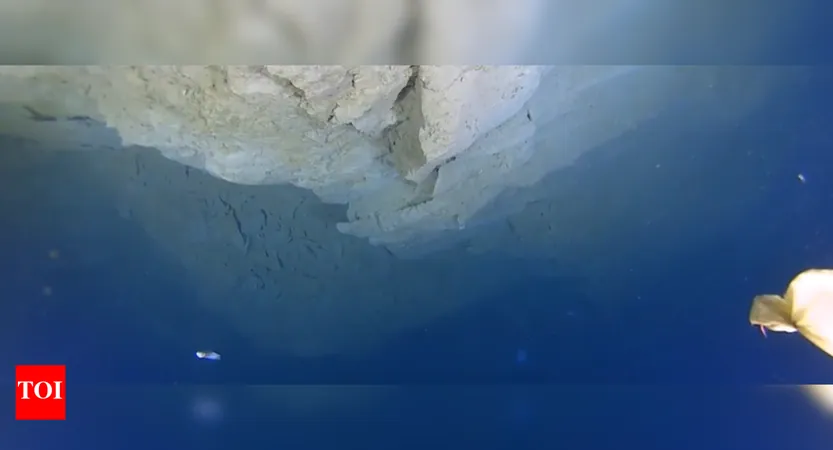
Scientists Drill into Japan's Deep Trench: Shocking Discoveries Await!
2025-08-30
Author: Daniel
Delving Deep into Earth’s Secrets
In a groundbreaking expedition, scientists have plunged into the depths of the Japan Trench to unravel the mysteries behind the catastrophic 2011 Tōhoku earthquake and tsunami. Aiming to decode the fault’s behavior, healing processes, and tsunami triggers, these researchers are on a mission to enhance predictive models and safeguard vulnerable communities across the globe.
Unveiling the Abyss: What Lies Beneath?
Vast and mysterious, the ocean floor holds secrets that can alter the fate of entire regions. As tectonic forces clash silently beneath the waves, scientists are seeking crucial insights into how massive earthquakes and tsunamis emerge. Their exploration leads them through murky depths, where they aim to find answers to prevent future catastrophes.
The JTRACK Expedition: A Quest for Knowledge
From September to December 2024, the International Ocean Discovery Program (IODP) embarked on Expedition 405, dubbed JTRACK, geared towards tracking tsunami-triggering slips along the Japan Trench. Aboard the advanced drilling vessel Chikyu, a team of 60 scientists ventured nearly seven kilometers beneath the Pacific Ocean to reach the fault that caused the devastating events of 2011.
Cracking into the Fault Line
The expedition reached the d�collement, the crucial base layer of the fault where the seismic slippage initiated. They successfully extracted sediment and rock cores from over 800 meters below the seabed, offering unprecedented insights into the conditions that led to the disaster.
Creating an Underwater Observatory
But the mission didn't stop at core sampling. The team also set up a state-of-the-art borehole observatory designed to monitor temperature and fluid pressure at the fault site, providing real-time data vital for understanding stress patterns and predicting potential future failures.
Decoding the Past Through Core Samples
Every few hours, scientists analyzed the core samples, searching for evidence of past earthquakes, tsunamis, and underwater landslides. They identified layers enriched with specific clay minerals, indicating conditions favorable for fault slippage, and observed the intricate layers of sediments that highlight the geological complexity beneath.
Global Implications of the Findings
This expedition revisited a site explored shortly after the 2011 quake, allowing researchers to assess how the fault has evolved over the past decade. The insights gained are not limited to Japan; they provide valuable data for understanding subduction zones worldwide, including areas in Chile, Alaska, and Indonesia, which also face similar seismic threats.
Healing of the Fault: What It Means
Initial findings suggest that the rocks damaged in 2011 might have re-cemented partially, limiting fluid flow yet possibly building up mechanical energy for future seismic events. Grasping this 'healing' process is essential for anticipating long-term seismic risks.
The Adventure Continues!
As scientists continue their exploration, the revelations from this deep-sea endeavor hope to reshape our understanding of seismic risks not just for Japan, but for coastal populations around the globe. Stay tuned for more startling updates from the depths of the ocean!

 Brasil (PT)
Brasil (PT)
 Canada (EN)
Canada (EN)
 Chile (ES)
Chile (ES)
 Česko (CS)
Česko (CS)
 대한민국 (KO)
대한민국 (KO)
 España (ES)
España (ES)
 France (FR)
France (FR)
 Hong Kong (EN)
Hong Kong (EN)
 Italia (IT)
Italia (IT)
 日本 (JA)
日本 (JA)
 Magyarország (HU)
Magyarország (HU)
 Norge (NO)
Norge (NO)
 Polska (PL)
Polska (PL)
 Schweiz (DE)
Schweiz (DE)
 Singapore (EN)
Singapore (EN)
 Sverige (SV)
Sverige (SV)
 Suomi (FI)
Suomi (FI)
 Türkiye (TR)
Türkiye (TR)
 الإمارات العربية المتحدة (AR)
الإمارات العربية المتحدة (AR)